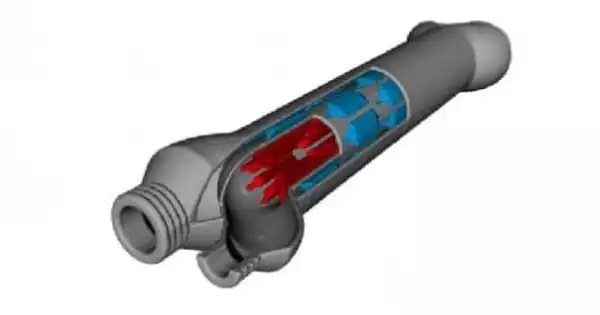Training & Development Policy of Jamuna Bank Ltd.
Over view of training:
Training can provide employees with knowledge and skills to perform more effectively, preparing them to meet the inevitable changes that occur in their jobs. However, training is only an opportunity for learning. What is learned depend on many factors such as the design and implement of training, the motivation and learning style of trainees and the learning climate of the organization. Training is the part of integrate in which performance is against criteria.
Training is developed and implemented in partnership with line managers, so a clear link is create between what happens on the job.
This text will take complete training process as it is conducted under ideal conditions. Unfortunately most of the organizations ideal condition are not exist.
One key factor in employee motivation and retention is the opportunity employees want to continue to grow and develop job and career enhancing skills. In fact, this opportunity to continue to grow and develop through training and development is one of the most important factors in employee motivation. There are a couple of secrets about what employees want from training and development opportunities. So organization should provide those scopes for employee’s development. These ideas emphasize what employees want in training and development opportunities. Training Development opportunities help to create devoted, growing employees who will benefit both the business and employee’s through your training and development opportunities.
In every company, Human Resources (HR) training or employee-related and legally-related topics is mandatory, especially for managers and supervisors. We need to equip our employees to handle their employee relations responsibilities competently. But, for maximum positive impact and learning, we need to make the HR training motivational and engaging.
The proper employee training, development and education at the right time provides big payoffs for the employer in increased productivity, knowledge, loyalty, and contribution. Learn the approaches that will guarantee a return on your investment in training.
Motivation, Training
Motivation
Motivation as the direction, persistence, and amount of effort expended by an individual to achieve specified outcome. Key factor in employee motivation and retention is the opportunity to continue to grow and develop job and career enhancing skills. There are a couple of secrets to what employees want from training and development opportunities.
Training
Training is the process of change the behavior. Giving Knowledge, skills & ability to a person. Training helps employees do their current job, the training benefits of training mat extent throughout a persons career and help develop that person for future responsibilities.
a) According to THAYER,
Training is the formal procedure which a company uses to facilitate employees learning .So that their resultant behavior contributes to the attainment of the company’s goals and objectives.
b) According to Blanchard & Thacker-
Training is a part of an integrated system in which performance is measure against criteria (best practices benchmarks) that a tied to strategic objectives. Training can provide employees with knowledge & skill to perform more effectively, preparing them to meet the inevitable changes that occur in their jobs. Training is only an opportunity for learning.
Basic objectives of training & development:
Training and Development objective, which should state the desire behavior and condition under individual performance and program can be measured.
- Improves the job knowledge and skills at all level of the organization.
- Help employee identify the with organization goal.
- Improves relationship between Boss and Subordinate.
- Proper guidelines for work.
- Provide information for future needs in all areas of the organization.
- Create an appropriate climate for growth and communication.
- Employees adjust with new change.
- Provide information for improving leadership knowledge, communication skills and attitude.
- Increase job satisfaction and regeneration.
- To improve the level of the skills, attitudes.
- To enhance the effectiveness of the org.
Importance of training & development:
- Organization’s get more effective decision making and problem solving.
- Develops sense of responsibility to the organization for being competent and knowledgeable.
- Training reduce outside consulting cost by utilizing component internal consulting.
- Through the Training & Development, motivational variables of recognition, achievement, growth, responsibility are internalized and operational zed
- Training & Development program increase job satisfaction and reorganization.
Training & Development:
This Section is responsible for assessing training needs in collaboration with the operating/line Managers and in advanced countries of the world. This Section is also responsible for the career planning of all the top Executives of the organization.
Functions of HRD Section-
Assessing Training needs- Each unit will assess it Manpower’s training needs on an annual basis based the objectives specified in the Annual Operating Plan as well as the analysis of individual training needs defined in Individual Operating Plans emerging out of the Annual Performance Appraisal process. Prior to these annual planning exercises, HRD will provide instructions and guidance about how this planning should occur.
Responsibilities:
The responsibility for assessing training needs is shared:
a)Employees together with their supervisors will discuss competencies and areas that need development as part of the annual appraisal process.
b)Supervisors will negotiate with their employees about which areas can be feasibly developed. The supervisor and coordination unit must provide the required support (financial, time, logistics) needed to make the training happen.
c)Department need to assess their future directions and needs. Out of this planning process will emerge training priorities. It is important that senior managers are sincere and transparent with information sharing about planned training events and approaches.
d)HRD must play a coordinating role. Besides compiling training plans, its role is to match needs with planned initiatives.
Steps of training & development:
One the job Training
a) Job Instruction Training is received directly on the job, and so it is often called on the job training. It is use primarily to teach workers how to do their current jobs.
b) Job Rotation: To cross train in the verity of the jobs, some trainers move a trainee from job to job. Through the rotation is most often associated with hourly employees, it can used for jobs on many levels within the organization.
c) Coaching: In the coaching program coach attempts to provide a model for the trainee to copy. Most company use the coaching method.
d) Assistant To Position Employees with demonstrated potential are same times given the opportunity to work under a second and successful manager, often in the different areas of the organization.
e) Committee Assignment can provide an opportunity for the employee to share in decision making, to learn by watching others, and to investigate specific organization problem.
f) Equipment Simulators: are mechanical devices that require trainee to use the same producers, movement, or decision processes they would use with equipment back on the job. It is imp. That the simulators be designed to replicate, as closely as possible, the physical aspects of the equipment and operating environment trainees will find at their job site.
g) Outdoor Training: A trend in employee development has been the use of outdoor training. The primary focus of such training is to trainees the importance of working together, of galling as a team.
Off the job Training:
a) Case Studies: attempts to simulate decision-making situations that trainees might find on the job. The trainee will usually presented with a written or videotape history, key elements and the problems or area or imaginary org. or submit. The written case study can be from a few pages to 100 or more. A series of question s usually appears at end of the case. The trainee must then make certain judgments and identify possible solution to the problem. The learning objective is to get trainee to apply known concepts and solutions and discover new ones.
b) Role Play: is an enactment of a scenario in which each participant is given a part to act out .Trainees are provided with a description of the context-usually a topic area, a general description of a situation, a description of a situation ,a description of their roles and the problem they each face. For example, the topic area could be managing conflict and the situation and might revolve around scheduling vacation days with the two parties in conflict being the supervisor and subordinate.
c) Lectures: is an extensive presentation of information which the trainee attempts to absorb. The lecture is typically thought of in terms of a person(the trainer)speaking to a group the trainees about the topic. lecture may also take the form of printed text. The only differences between a straight lecture and the same material in print are the lectures control of the speed at which material is presented, voice inflections and body language used to emphasize points and the visual image of the lecturer.
d) Demonstrations: is a visual display of how to do something or how something work. Shows the trainee how to perform the tasks of the job. To be effective, a demonstration should at a minimum be accompanied by a lecture and preferably by a discussion.
e) Video & Films Using various media production to demonstrate specialized skills that are not easily presented by other training method.
Staff development:
Staff development means employees development is Future oriented training, focusing on the personal growth of the employee. Employee development is more future oriented and concern with education than employee job specific training. Employee’s development activities focus more on the employee’s personal growth.
It is important to consider one critical component of employee development all employees, regardless of level, can be developed. Development was reserved for potential management personnel. The use of the work teams, reductions in supervisory roles, allowancing workers to participate in setting the goals of their jobs, and a greater emphasis on quality and customers have changed the way developing staffs viewed.
Training of Jamuna Bank Ltd:
Human Resource Development activities aim at fulfilling the banks mission. One of Southeast Bank four major missions is to: “Provide service to our clients with the help of a skilled and dedicated workforce whose creative talents, innovative action and competitive edge make our position unique in giving quality service to all institutions and individuals that we care for”.
Skilled and dedicated workforce with creative talents, innovative action is not always readily available. Appreciating the scarcity of such manpower, the bank from the very beginning laid important to HRD that conceptually includes activities like: pre-recruitment drill, recruitment, induction training training in the academy, job rotation, placement and posting, reward and promotion. All these activities are planned by the bank in an integrated way aiming at manpower with required technical, managerial, human and conceptual skills.
Management of Jamuna Bank not only appreciates the need of skills required for day to day banking but also realize the need of skills meet the national and global financial and economic environment that are changing fast.
The training & research academy of Jamuna Bank Ltd.:
At the very beginning the bank laid a foundation by setting up an academy at Head Office under Human Resource Development Division to human resource internally. Equipped with a professional library, modern training aids, knowledgeable faculty and other facilities, the academy of the bank had been a leading one among the banks on private sector.
The academy regularly conducts foundation course, specialized courses and seminars in different areas of banking to take care of the professional banking needs. In addition, officers are regularly sent to Bangladesh Institute of Bank Management (BIBM) and Bangladesh Bank Training Institute (BBTA) for professional training. Sending officers abroad for higher training is regular feature. A research department also works in aid of HRD operational areas.
In the year 2008, the academy has conducted 31 programmers (including training, workshop and seminar) where a total number of 1059 Executives and Officers attended.
Besides, 56 Executives and Officers for BIBM training, 13 Executives and officers sent for BBTA training and 7 Executives and officers were sent abroad for foreign training.
Objectives of Jamuna Bank Ltd. academy:
Jamuna Bank Academy, establish in 1983 as an in-house training institution, takes care of the training need of the employee of the bank. The objectives of the Academy are to:
- Ø Make available skilled and dedicated workforce within shortest possible time by reducing time required for on the job training.
- Ø Develop understanding about law and practice of banking through foundation training.
- Ø Impart technical skill to the operation level officers through case studies/practical exercises/ demonstration/project visit for efficient desk operation.
- Ø Develop analytical & decision making skills of the officers.
- Ø Develop understanding about human/conceptual skill and organization culture.
- Impart managerial skills to groom future executive and to keep existing Executives up-to-date with national international environment.
Training for Jamuna Bank employees:
Jamuna Bank employs a large number of employees for performing various jobs. Some of them are newcomers. They need more knowledge and skill for better performance of jobs. They are, therefore, in need of proper training to contribute to the achievement of the organizational goals. There are some jobs that require little or no training but many of them need to be performed by adequately training. The use of modern technology has created new jobs in the organization, which required training.
Training involves the change of skills, knowledge, attitudes or behavior of employees. Although training is similar to development in the methods used to attract learning, they differ in time frames. Training is more present day oriented; its focus is on individuals’ current jobs, enhancing those specific skills and abilities to immediately perform their jobs. Employee development, on the other hand, generally focuses on future jobs in the organization.
Training differs from education. Training is concerned with increase in knowledge, skills, and abilities of the employees in doing a particular job. It has a narrow aim limited to increase in knowledge and skill related to a job. Education, on the other hand, broadens the mental faculties and horizon of knowledge. It is concern with enhancing general knowledge and motivating one to understand the total environment.
Training is often understood as a learning experience. So, if employees are to understand what training can do to improve an employee’s job performance, employee should begin by explaining how learn.
Training widens job related knowledge of the employee. Employees become more skilled and update their knowledge through training. Training provides necessary instructions for performing the current job efficiently. Training differs from education and development.
Imparting of training to the employees has become very much important in modern times for better performance of the job. Here it can be said that the question of training does not arise but making choice of the method of training arise.
Training & development of Jamuna Bank:
We have given emphasis on need based trainings. During the promotion interview, we tried to identify the weakness and the individual need for training and development. Beside that, we have met numbers of employees and interviewed them training need. From the employees yearly performance appraisal report we have taken the data and information on training need. Since most of the supervisors/ managers are involved with the planning , therefore, in this regard we have given due importance to their recommendations, HR Division sent a draft Training & Development proposal to all concerned of the bank and obtained their comments/ suggestions. We have tried to identified the need for training in developing new product based on the retail banking. From the different level interview and management interview, it has been found that our potential managers need development on different skills (i.e. managerial skill, leadership skill, decision making skill, communication skill etc.)
Objectives of the training & development plan:
- To encourage growth and career development of employees
- To improve the Bank’s effectiveness by providing employees development of job related KSAs (knowledge, skills & attitudes)
- To meet the needs of Bank’s business while simultaneously responding the needs of individual employees development
- To prepare & make ready our workforce to comply with the new changes in the banking business
- To create an outstanding professional image in the banking industry by developing our workforce through need based & future requirement training
Types of training program:
For fresher, foundation courses on elementary knowledge of banking are organized. Specialized courses on the area like credit, foreign exchange, accounts and marketing etc. are meant for officials working in those areas. Higher level courses are run on specific knowledge area. Certain courses are a blend of different knowledge areas. In addition, certain priority programmers are also being conducted by the academy. These include programmed on Productivity Improvement, Money Laundering Prevention, new skills required to perform new jobs.
Training techniques of Jamuna Bank:
Jamuna Bank Provide Several Training methods.
Methods in training include: discussion/ lecture/workshop/case study/games/ role play/ film show/ simulation/group work & Presentation/ project visit and so on.
The major Types of training are:
- Freshmen Orientation
- Continues Orientation
- On The Job Training
- Off The Job Training
Freshmen Orientation:
Freshmen orientation can solidify the new employee’s relationship with your organization. Here’s how to make sure your orientation integrates new employees into your company and makes them feel comfortable and welcome. Freshman orienting the new employee is a critical step in helping him adjust to the workplace and the job. This article provides tips for the process and the contents of orientation.
Continuous Orientation:
Jamuna Bank arrange also orientation for other employees likes for Account section, Foreign Exchange, or Marketing division going to introduce some new technology or up coming new service. Jamuna Bank management evaluates their employees within every six month and they try to find lacking of employees. Then they are going to arrange this orientation.
On the Job Training:
Foundation courses have two parts: theoretical training in the academy and job rotation. The officers on probation are required to undergo both in a period of one year. During this period, three-phased training programmed is effective. On theoretical training say, general banking, the officers are required to undergo rotation in general banking activities under the supervision of HRD. Similar process is followed in case of CRM & Foreign Exchange.
Off the Job Training:
Which employees are already exist in the Jamuna Bank for these employees better performance need some special training which are called Off The job Training in that case Jamuna Bank take some Off The Job training like
Class Room Training or Lecture
Video Presentation
Laboratory Training
Case Study
Class Room or lecture is best use to create understanding of a topic or to influence attitudes through education about a topic. In its simplest form the lecture is merely telling some one about some thing.
Video Presentation allows the trainee to be placed into a real-life job situation, solve a specific problem, and receive immediate feedback as to effective of the decision made. This training can be as simple as providing some declarative or procedural knowledge, or complex as teaching how to diagnosis or improve communication skills.
Laboratory Training designed the interpersonal skills, which can be help for future job responsibilities; its main form is sensitivity training which increases a person’s sensitivity to other.
Case Study attempt to simulate decision making situation that trainee might find on the job. The trainee must make certain judgment and identify possible solution to the problem. This training is very much important for top management employees. By this training they learn about the real hypothetical circumstances.
Faculty of Jamuna Bank training program:
The academy has built up a pool of knowledgeable/competent trainer within the bank. In addition to permanent and professional trainers, speakers are drawn from operational side so that on the job experience may be exchange and shared. Over and above, speakers from Central Bank, professional training institutions, universities, research organizations and Govt. organizations are also invited to share views and experience. Senior and retied bankers are also regularly to enhance effective of training.
Library of Jamuna Bank academy:
The academy has a good collection of books, journals and magazines. The books are mainly on subjects like banking, economics, accounting, management and marketing etc. As on December 31, 2008 the library had 5,653 books/titles. The books are issued t the employees usually for one month.
Recommendation:
Employee Recruitment:
- Recruitment advertisement may be published in both newspaper and website.
- There may be an option of application through online.
- Organization may be issued regrets letter to them who were not selected for the interview and shall be informed the reasons of regret.
- Recruitment and Selection processes complex and involve human decision making which could be imperfect. This needs careful monitoring to minimize subjectivity and ensure fairness.
- Quality of employee recruitment decision must be ensured.
- Recruitment and Selection process needs careful monitoring to minimize subjectivity and ensure fairness.
- Human is most dynamic resource for an organization. Getting the best person is a critical issue.
- Good and effective recruitment in effect is a job well began in the dynamics of organization’s growth and progress.
- The knowledge, skills, Experience and Job specific competences assessment framework currently development should reflect the guidance in the statutory codes of practice, be non-discriminatory, transparent, promote equality of opportunity and be objective.
- Recruitment and selection are an integral component of Human Resource activities, which includes employees training development and compensation and employee relation.
- A comprehensive monitoring system, tracking applicants from application through to appointment, should be developed and implemented.
- All those who sit on selection panels be required not only to be trained but also to attend refresher courses after an appropriate period of time.
Facilities:
- Now a day’s world is very fast. Most of the organizations open on line customer service system. So in order to complete in the world market they should adopt online organization system for all customer.
- Organization should offer more facilities to the customer. Such as ATM card, credit card etc.
Working Environment:
- The organization may ensure a very good working environment. Thus the employee turnover reducers.
Training Facilities:
- The organization may ensure training facilities for all employees so that they can serve better to the customer.
Comment:
The bank has an integrated HR plan. Their manpower ratio is satisfactory for smooth and quality services to the potential customers. In spite of good HR plan, the bank should follow trend analysis for forecasting HR needs to retain standard customer services.
Conclusion:
As a personnel function, recruiting can be viewed as a major human resource planning programmed designed to attract the qualified work force required to meet future organizational needs. Recruiting also provides a means of achieving affirmative action goals set by human resource planners and policy marker. Recruiting also serves to attract workers to unexpected job vacancies caused by turnover and to new positions created by sudden demands for goods and services of an organization.
It is known to all the sound personal activities help an organization to function efficiently but to do this an efficient personnel manager must be a person who has sound knowledge and experience in personnel management. It is possible only through proper training and practices.
To eliminate the weakness of personnel activities some good measures are needed. In the chapter the fact of the study were listed. I have tried to point out strength and weakness of the system with limitation of time and preoccupation of official work. I had to work on the study. I have tried my best to collect all available data and other information regarding present Recruitment and Selection practices in Jamuna Bank Limited. In fact, my experience in Human Resource Management is not up to my expectation as we studied in the Program of MBA in Human Resource Management of this University has given us theoretical knowledge and completion of theoretical course, preparation of this report has helped the wide range of our knowledge in Human Resource Management.
Bibliography
Journal:
Annual Report 2009 of Jamuna Bank Ltd.
Jamuna Bank Ltd, Guidelines Manual of 2009.
Website:
http://www.google/ bank/Bangladesh.com
http://www.JBLbd.com
Book
Dessler “human resource management”10th edition
Page-(152-154)
Others
Human Resource Department of SLF
Hand notes during class.
Jamuna Bank Ltd, Daily Affairs of Malibagh Branch
















